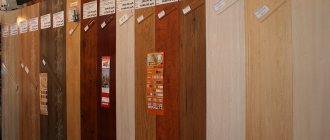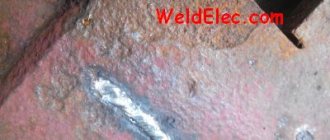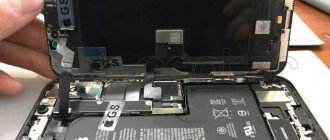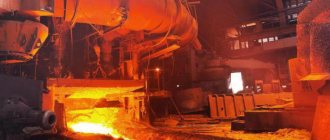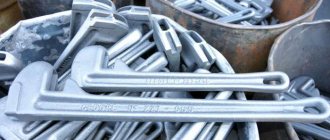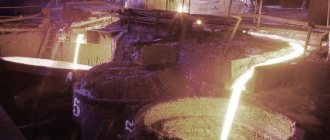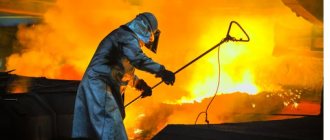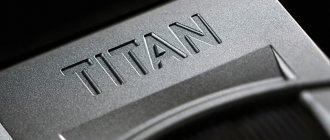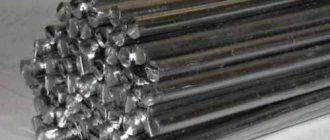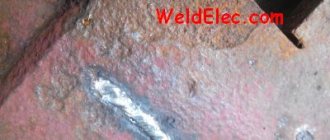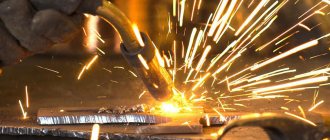Industrial soldering of cast iron is considered a labor-intensive and tedious task, which is explained by the peculiarities of the structure of the melted material. Cast iron is characterized by the presence of graphite in its composition, which limits the access of solder to the surface.
In this regard, before starting soldering work, this material must undergo sandblasting. Upon completion of this procedure, welding (soldering) of cast iron is noticeably easier, since practically no graphite remains on its surface.
At low temperatures
With the low-temperature method of melting cast iron, its surface is subjected to pre-treatment, for which a special flux is used.
In addition to flux treatment, an electrochemical method can be used, which consists of placing cast iron blanks in special salt baths. Upon completion of these operations, the surface prepared for soldering is degreased with acetone.
For high-quality degreasing of cast iron before soldering, an alkali solution or aviation gasoline can also be used.
To process the prepared material, you will need one of two tools:
special soldering iron power up to 1 kilowatt (for soldering);- gas torch used in welding cast iron parts.
In cases where the solder contains complex salts of chlorine, tin or copper, it is recommended to use fluxes made on the basis of zinc chloride for soldering cast iron..
To facilitate the fusion procedure, you can use the method of contact copper plating using copper sulfate.
Low temperature soldering
Soldering at low temperatures requires a special approach and additional pre-treatment. Pre-soldered surfaces must be treated with PV209 flux or its close replacement PV284CHH. Processing temperature 620-695oC. Electrochemical treatment with a saline solution followed by degreasing the surfaces with acetone, alcohol or another substance suitable for these purposes brings good results. The choice of using a soldering iron or a gas torch remains with the performer and does not affect the result obtained.
The soldering process is carried out with a soldering iron or torch. The most satisfactory result can be obtained by using fluxes based on zinc and chlorine, which also include chloride salts of some metals. Low-melting solders for soldering cast iron may require preliminary copper plating of the surface. It can be produced by electroplating. At home, contact plating with copper sulfate is available. The optimal solder is lead-tin solder or tin soldering.
High temperature mode
For brazing cast iron at high temperatures, brass or similar filler alloys are typically used. Much less often the same alloys are used, but with the addition of silver or nickel.
When soldering cast iron with brass, it is possible to obtain a fairly strong connection with relatively little heating.
To neutralize graphite, active fluxes under the designations P209 and PV285X can also be used on the surface of the part being prepared for soldering.
In addition to the fact that in this case there is usually no need for special processing - the cast iron workpiece also acquires special heat resistance, withstanding heating up to 900 ℃.
This approach should avoid the use of copper-based materials, which have a significantly higher melting point. In addition, solder based on active phosphorus is strictly prohibited, the presence of which leads to the formation of a brittle connection.
To heat up cast iron before welding and soldering, use a conventional blowtorch or a classic gas burner operating to produce a neutral flame. In order to increase the strength of the seams, it is recommended to additionally anneal them at 700…750 ℃.
Soldering cast iron - brief information and types
Cast iron has a specific structure; soldering it is a difficult, tedious and time-consuming task.
All this is due to the fact that cast iron contains graphite - it limits the access of solder for melting to the surface of the material.
To solve this problem, you should resort to sandblasting. After sandblasting, the graphite on the surface of the cast iron will almost completely disappear, which will make soldering or welding of the cast iron material easier.
Soldering cast iron can occur in two ways:
- At low temperatures;
- And at high temperatures;
First of all, I’ll tell you about low-temperature soldering, then about high-temperature soldering, along with my experience, and at the end there will be a little about soldering defective areas.
Low temperature brazing of cast iron
When low-temperature soldering of cast iron material, it should be subjected to special processing.
This treatment can be flux or using an electrochemical method.
For flux processing, active fluxes are used - P209 or a similar one PV285X.
And the method of electrochemical processing consists of placing a cast iron workpiece in a special salt bath, after which the workpiece should be degreased.
Acetone is suitable for these purposes; for better degreasing, use an alkali solution or aviation gasoline.
Before soldering, the material must be prepared and heated using one of the following tools:
- Soldering iron (power up to 1 kilowatt);
- Gas burner for soldering cast iron products;
If your solder contains complex salts of copper, tin or chlorine, then when working with cast iron products, it is recommended to use fluxes based on zinc chloride.
Source metallisten.ru
Also, to facilitate the process, use the contact copper plating method, which uses copper sulfate.
From my own experience, I will say that the method of low-temperature soldering of cast iron is quite good - the result is good seams, the method itself is less expensive, although longer. In some situations, the low-temperature method is the best option.
High temperature brazing of cast iron
When soldering cast iron at high temperatures, brass-based solders or similar filler alloys should be used.
When working with brass-based solder, you can get a strong connection with little heating by the standards of cast iron melting.
If the budget and the cost of the resulting product allows, then it is worth using silver-based solders with nickel impurities.
An alloy with such solder forms a strong and high-quality connection, and it also has intermediate melting characteristics.
Cast iron during high-temperature soldering, as well as during low-temperature soldering, requires pre-treatment in order to remove graphite from the surface of the cast iron material.
So, after sandblasting, you should use the same active fluxes P209 or PV285X that were used in the previous method of soldering cast iron.
Source art-liga.rf
Also, with the method of high-temperature soldering of cast iron, the need for special processing disappears.
Additionally, with this method, the cast iron workpiece acquires high heat resistance - it will withstand heating up to 900 degrees Celsius.
When soldering cast iron products at high temperatures, do not use copper-based materials and solders - since copper has a higher melting point.
Under no circumstances use solders based on active phosphorus in this method, because its presence in the finished product will lead to an extremely fragile connection.
To heat up cast iron before soldering or welding, use a blowtorch (even a regular one will do) or a standard gas burner, which should operate with a neutral flame.
After the soldering process, if desired, you can additionally anneal the seams at a temperature of 700-750 degrees Celsius to increase their strength.
In my experience, the high-temperature soldering method is of higher quality - the seams that result from the work are much better than after soldering at low temperatures.
So if you need a strong and durable connection, then use the high-temperature soldering method.
Source art-liga.rf
Defective areas
If you need to restore defective areas, get rid of porous areas or remove cracks from a cast iron product, then you should use soft solder based on tin and lead with the addition of a small amount of POS30 antimony (this is very important, since it contains 30% tin ).
In order to remove graphite from the surface of cast iron, instead of flux, you can use an aqueous solution of zinc chloride with the addition of salt formations based on copper and tin.
Before proceeding to the restoration of damaged areas, carry out pre-treatment of the workpiece - stripping and tinning.
After this, degrease the surface of the workpiece with gasoline, then apply flux to it.
Before the soldering process, it is necessary to heat the damaged area with a gas burner or blowtorch to a temperature when the filler material begins to melt on the surface of the cast iron product.
Then proceed to sealing the defects. It doesn't matter what soldering tool you use to solder the defective areas.
I recommend the following video, in which the author explains in detail and shows how to correctly industrially solder cast iron with tin solder:
Defective areas
If it is necessary to restore defective and porous areas of cast iron, it is more convenient to use soft tin-lead solder with a small addition of antimony, produced under the designation POS3O (it contains 30% tin).
And the function of flux for soldering in this particular case should be performed by zinc chloride (more precisely, its aqueous solution) with the addition of salt formations based on tin and copper.
Restoration of damaged areas proceeds only after their preliminary treatment (cleaning and tinning). After this, the surface to be prepared should be degreased with gasoline, and then a flux composition should be applied to it.
Before soldering, the working area is heated with a gas burner until the filler material melts. At the final stage of work, all existing defects are sealed. The choice of soldering tool does not matter here.
As a result
Soldering cast iron is indeed a difficult and time-consuming task, however, if you put in a little effort and patience, you can soon learn how to do it. For soldering, you will in any case need fluxes, sandblasting, a soldering iron or a gas lamp. Soldering itself can be of two types - low-temperature and high-temperature, each is used in different situations and has its own pros and cons. So which method to choose is up to you.
Question
Write in the comments what you think is the highest quality soldering of cast iron - low-temperature or high-temperature, or does it all depend on skills
Soldering cast iron with tin - Metalworker's Guide
Soldering is one of the methods of joining two parts, in which only the connecting material is melted, and the surfaces of the elements themselves are completely preserved. Using this method, you can connect dissimilar materials, rather small elements, fragile microcircuits, connect or grow wires, attach hard alloy plates, and carry out anti-corrosion treatment.
Most often, alloying is done using brass, which is an alloy of zinc and copper. Therefore, before starting work with a soldering iron, you should study the features of using this material.
Preliminary preparation of surfaces and cutting of cracks before soldering cast iron
Particular attention should be paid to the pre-treatment of the surface that is planned to be soldered or tinned. As a rule, this repair method is applicable to cracks and chips in massive parts, when replacement with a new element is technologically unjustified or due to cost considerations or manufacturing difficulties. The cutting of cracks and their processing must be maintained within the framework of certain rules, which will allow to prolong the operation of the entire assembly and obtain high-quality contact between the metal and the solder.
Preliminary tinning of the surface improves the quality and reliability of subsequent soldering. Tinning occurs in the following order:
- The parts are pre-cleaned using mechanical methods until a uniform shine appears on the surface. Soldering cast iron at home involves the use of a metal brush and sanding pads of appropriate grain size.
- Perform degreasing using liquids intended for these purposes.
- Pre-flux treatment is carried out. An aqueous solution of zinc chloride, with the addition of chloride salts, can be considered a universal remedy for cast iron products, regardless of the shape of the graphite inclusions.
- The elements are heated to flux operating temperature. Flux is applied.
- The area to be soldered is further heated to the melting temperature of the solder.
- Solder is applied. An element with a film of tinned metal is ready for further soldering.
Features of processing defective areas
If you need to connect parts of defective areas, it is best to use a lead-tin alloy as solder.
As a rule, POSZO is used to connect porous areas, cracks and shrinkage cavities. In this case, a solution of zinc chloride in water should be used as a flux. Tin and copper chloride salts are also added to the solution.
Parts can be connected only after preliminary processing. Parts in defective areas are cleaned and tinning is carried out. For tinning, it is necessary to clean off the casting crust from the surface of the parts. A wire brush is suitable for this. Next, the surface must be degreased. For this, gasoline or an alkaline solution can be used. After this, flux is applied. The soldering area is heated with a gas burner. It is required to reach the melting temperature of the filler metal. After this, you can solder all defects using a soldering iron or torch. After this, the surface must be washed with water. It can be either hot or cold.
Thus, soldering or welding of cast iron can be done using various solders. Different metals used for this purpose have different characteristics. They differ in melting temperature and the strength of the connecting seams formed. The difficulties in processing metal are due to the fact that it contains graphite.
Is it possible to solder cast iron - Welding Pros
Graphite, as one of the main components of cast iron, has a strong influence on the course of processes. During thermal, mechanical and other types of processing, its influence is felt on the quality of the seam and its durability.
When soldering and tinning, this structural element leads to incomplete wetting of the base with molten solder and tinning composition.
Such simple technological steps as sandblasting the surface or burning an oxygen gas burner in an oxidizing torch do not always bring the expected effect and result that satisfies the initial requirements.
On an industrial scale, the method of electrochemical action of a salt solution heated to 512 ° C to remove surface active carbon (graphite) is gaining increasing momentum.
